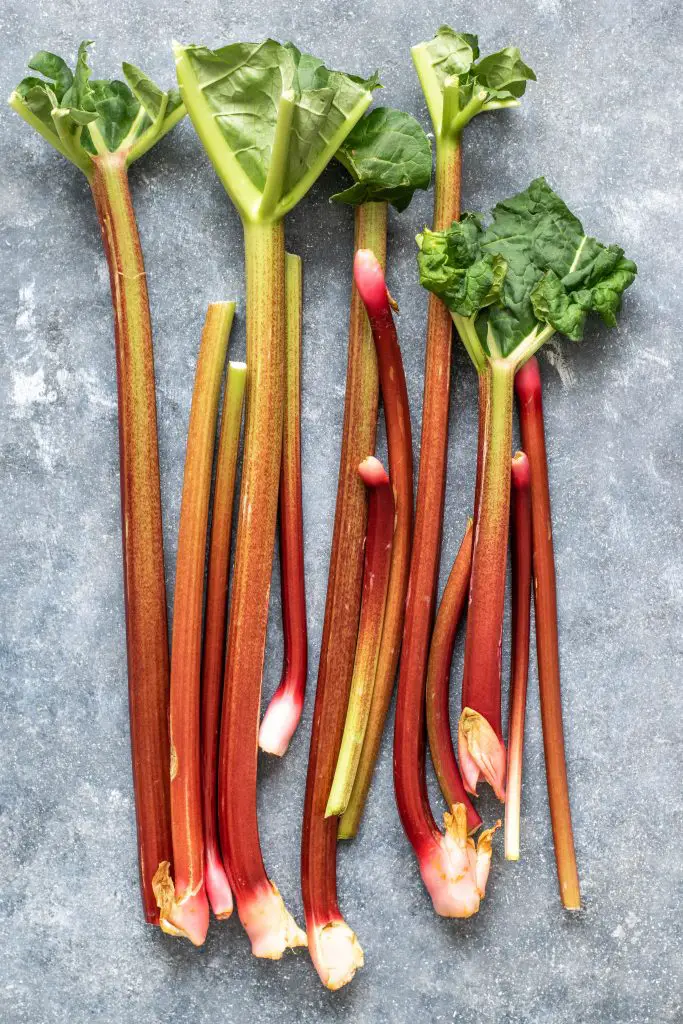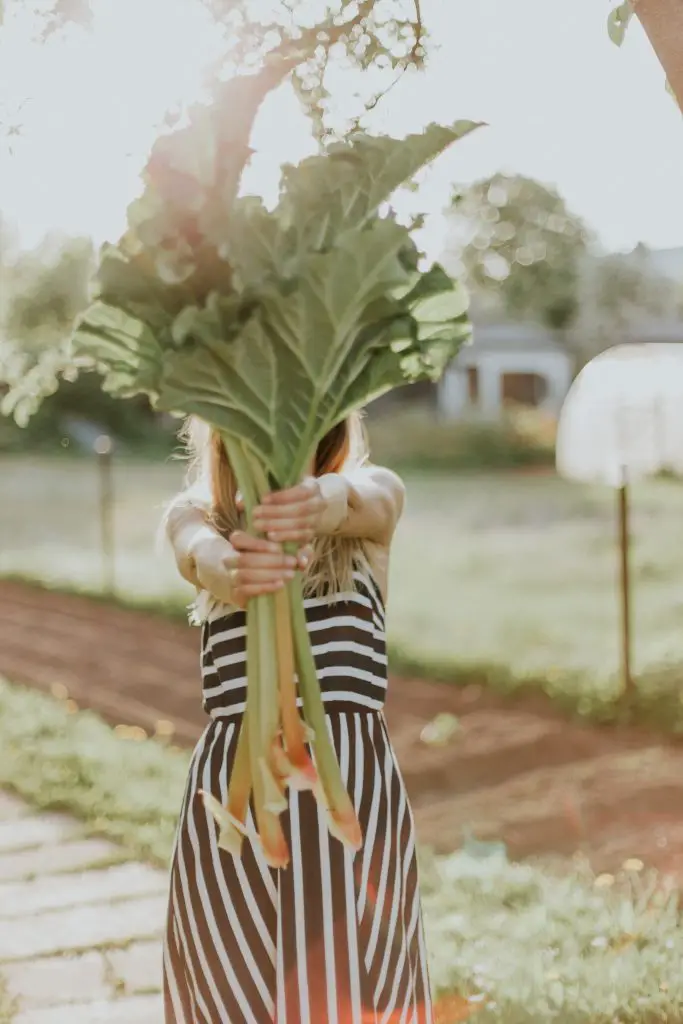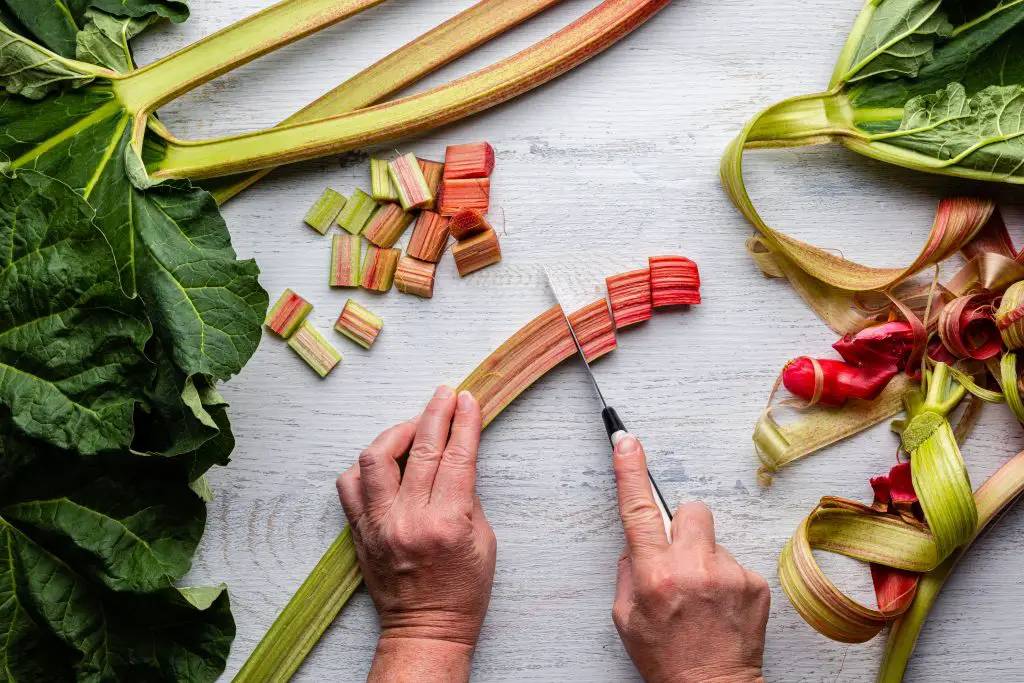Does Rhubarb Spread? Is It Invasive? Rhubarb is one of the most popular fruits and vegetables that can be grown in a garden because it is extremely easy to grow and will produce masses of stalks that can be used in a range of delicious desserts such as pies and tarts. However, one of the most common questions asked does rhubarb spread? And is it invasive?
Rhubarb plants do spread but the rate of this spread is extremely slow and the plants are not considered invasive in any way. The plants have crowns that will gradually increase in size over time, however, they do become less productive unless they are divided on a regular basis. Typically, most gardeners will divide the rhubarb every couple of years to ensure that they remain vigorous.
The best time to divide rhubarb is at the end of the season when the weather is beginning to cool down and you have harvested most of the stalks that are available. To start dividing the plant dig up the entire clump by levering a spade underneath the crown until it is progressively lifted from the soil.
Once the crown is out of the ground it can be divided by slicing it in half using a spade or shovel. However, when doing this it is important to ensure that there is at least a few buds on each section of the crown as such it is a good idea to ensure that the sections are atleast 3 to 4 inches wide.

When the crowns are separated they can be returned to the soil, however, given that the plants have been disturbed at this point it is a good idea to add additional compost to the ground where you are going to replant the rhubarb to ensure it has plenty of nutrients. If you are planning to plant the new rhubarb plants nearby they typically need to be spaced approximately 3 feet apart to allow for the plants to develop over time.
In terms of location rhubarb plants perform best in sunny locations, however, they can tolerate shade and will still produce plenty of storks but, the yield will be usually lower because the rate of photosynthesis is reduced.
Can Rhubarb Be Left Outside During Winter?
Whether the Rhubarb can be left outside will depend upon the zone in which you live however as a general guide rhubarb can tolerate temperatures of approximately 24F. Typically, this means that a plant can be left in the ground if you are living in zone 5 or higher.
However, if you live in an area that experiences hard frosts it is advisable to prepare the plant for winter by applying a layer of mulch that is around 2 to 4 inches at the time of the first frost as this will help to insulate the plant from the worst of the winter weather. It is also important prior to remove all the storks from the plant before applying the mulch.

Can Rhubarb Be Grown In A Container?
If you live in a very cold location one of the options for growing rhubarb is to grow it in a container. The container typically needs to be 8 to 10 inches deep as the plants’ roots typically go down around about 6 inches. Ideally, the container should be relatively wide as this will provide room for the crown to spread and produce a large number of stalks.
When placing the plant in a container it is also important to ensure the soil contains plenty of organic matter because that will provide the plant with all the food it needs and also help with moisture retention. However, if you live in a region that has quite hot summers then you may also consider mixing in some hydrogels as this will help to maintain moisture in the soil for a longer period of time. To see how hydrogels affect the moisture in soil click here.
It is also advisable to add a thick layer of mulch which will also help to retain moisture within the soil for a longer period of time. When growing in cold locations the Rhubarb should remain indoors from the first frost through to the last frost in winter.
As the crowns do not grow significantly through the winter period your storage location does not need a lot of light, however, it does need to be warm enough to prevent the soil around the Rhubarb from freezing solid otherwise it is going to die.

Caring For And Harvesting Rhubarb
Once the Rhubarb is in its growing location, which can be in either a container or in your garden, there is actually very little maintenance required. The main thing is to ensure that the plant has plenty of water and nutrients. As such is advisable that you apply slow-release fertilizer at the start of each growing season to ensure they have plenty of nutrients.
When the plant has produced the storks they can be removed from the plants by pulling them off the plant rather than cutting the storks. Pulling them off is preferable because cutting the storks can lead to the introduction of disease to the crown.
Once the stalks have been removed from the plant the leaves should be chopped off as they are poisonous. It is best to pick the stalks just before you were going to use them as they are at their freshest. However, if you have more stalks than you can use they can be stored in a vegetable crisper of the fridge for around 2-weeks if needed.
I hope you found this article useful and have great success growing your rhubarb plants at home, if you have any additional questions or comments please leave them in the section below.
Relevant Articles
Can You Grow Rhubarb From Stalks?
Is Swiss Chard And Rhubarb The Same Thing? How Do You Tell The Difference?
When Should I Plant Winter Vegetables?
